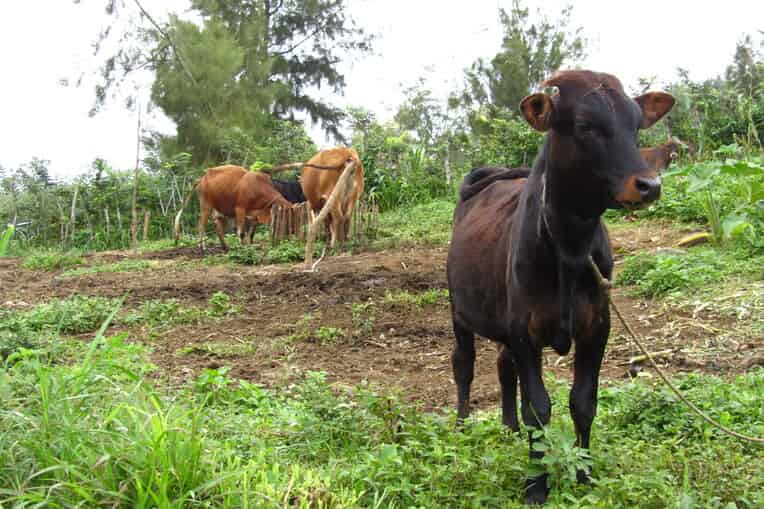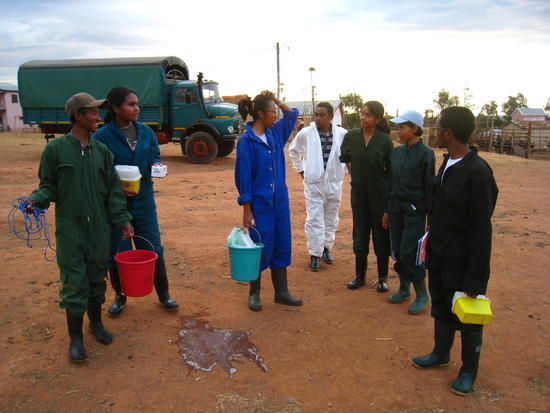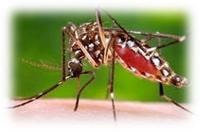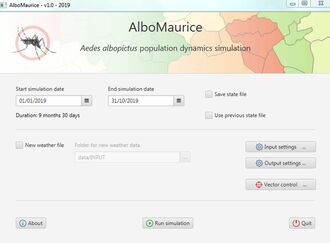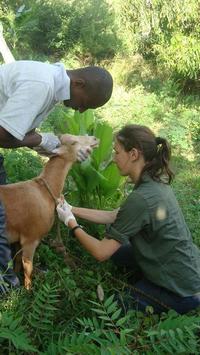One Health OI network & TROI project
Last update: 12 May 2023
"In 2005, a Chikungunya epidemics affected thousands of people in the Indian Ocean region. This event confirmed that sharing health information between the countries of the Indian Ocean Commission (Comoros, Madagascar, Mauritius, France/Reunion and Seychelles) was essential. At the same time, zoonotic diseases such as Rift Valley fever and other high-impact animal diseases such as « peste des petits ruminants » have burst out endangering food security in the area. To address these threats, a « One Health » approach was developed with the implementation of the SEGA One Health network, in charge of the surveillance of human and animal infectious diseases, and the One Health Indian Ocean platform in partnership, its alter ego for research activities" explains Eric Cardinale (Deputy Director of the ASTRE joint research unit (Cirad)).
Created in 2015, the platform in partnership for research and training – One Heath OI - is a regional research and sanitary actions network gathering more than 120 animal and human health experts, and environmental science professionals from eight countries of the south-western Indian Ocean (Reunion, Madagascar, Mauritius, Union of the Comoros, Seychelles, Tanzania, South Africa, Mozambique). It aims to improve the prevention and control of infectious animal and human diseases through a regional, integrated, crosscutting and interdisciplinary approach known as “One health approach”.
Among its projects, The TROI project, funded by Europe (under the FEDER INTERREG V) and the Réunion Region, is tracking health risks in the Indian Ocean region. It aims to :
- Analyze the determinants fostering the introduction of pathogens and antibiotic resistance to assess the vulnerability of the islands.
- Develop innovative means of surveillance, monitoring and control (related to the SEGA One Health network*) for greater responsiveness and an even more effective response.
*The SEGA One Health network: this human infectious disease surveillance network was created in 2009 thanks to funding from the French Development Agency (AFD) and supported by the Indian Ocean Commission (IOC). It was structured around two specific objectives: the establishment of a regional network for epidemiological surveillance and response coordination and the strengthening of national capacities for surveillance of diseases with epidemic potential and response to epidemics in IOC Member States.
Developing new approaches to surveillance...
New surveillance approaches such as participatory epidemiology, syndromic surveillance and risk-based surveillance are being explored. They complement the traditional epidemiological surveillance approach deployed by the SEGA One Health OI network. The confluence and convergence of the informations collected in this way makes it possible to increase the effectiveness of control services in the case of abnormal health phenomena.
Participatory epidemiology thus combines the collection of relevant quantitative and qualitative epidemiological data from local communities, "ethnoveterinary" knowledge (all the knowledge of livestock farmers in terms of animal health), traditional oral history and local dialects. All of this information is compared with that obtained through operational epidemiological surveillance methods conducted at the national level within the framework of the SEGA One Health network. This approach is being tested in Comoros for Peste des Petits Ruminants (PPR) and in Madagascar for rabies in order to assess the perception of these two diseases and their control among pastoralists and village communities.
In addition, the development of risk-based surveillance protocols allows the optimization of surveillance at major entry points - ports and airports - on a territory in order to detect early on possible introductions of infected animals before their dissemination on a territory. Two diseases in particular are targeted: PPR and Foot and Mouth Disease (which can be detected in case of clinical signs with specific tests), but also any other possible introduction of infectious diseases at risk for the region.
Anticipating risks through a better knowledge of the vulnerability of the islands of the southwestern Indian Ocean...
The diversity of pathogen populations responsible for the circulation of infectious diseases is studied, as well as their vectors in the case of vector-borne diseases. Studies are aimed at characterizing the environmental (landscape diversity, role of wildlife and its potential reservoirs) and climatological (temperature, rainfall, wind) determinants that act on their persistence or the emergence of certain pathogens in a given territory, as well as the potential reservoirs of these pathogens. Their presence is quantified and their persistence in their environment evaluated. These data will ultimately enable the calibration and validation of models for the distribution of pathogens and their vectors, models that support decision-making on the control actions to be targeted.
Today, ALBOMaurice, a declination of ALBORUN developed for the ARS in Reunion Island, is used to predict when and where Aedes albopictus, the mosquito vector of dengue fever in Mauritius, will develop according to these criteria. "The forecasts provide maps and indicators that the services of the Mauritius Ministry of Health can use to identify priorities and optimize intervention efforts in the field" explains Annelise Tran, researcher at CIRAD. Scenarios of different control strategies can thus be simulated and compared before decisions are taken. In addition, these modelling approaches can meet the growing need for solutions to control the spread of vector-borne diseases such as dengue or chikungunya in new areas of the region, where their mosquito vectors are present.
Assessing the potential risk of developing antibiotic resistance and identify alternative treatment options...
Here too, the approach is integrated with the consideration of different dimensions. The resistance of bacteria isolated from farm animals in the islands of the southwestern Indian Ocean is characterized in parallel with the situation observed in humans in community and hospital environments. The transmission of these resistances between animals and humans is also studied. The risk factors that facilitate the appearance of these resistance phenomena in animals and humans are studied with the aim of preventing them. Molecular matrices for which resistance can be observed are identified. Finally, alternative solutions are tested, the idea being to explore any other therapeutic path that could be an alternative to antibiotics, for example antibacterial essential oils, in parallel with the implementation of effective preventive measures within populations. In recent years, there has been renewed interest in these natural substances, which had been abandoned in favor of synthetic molecules.
In particular, the Indian Ocean Commission (IOC) has identified the surveillance of antibiotic resistance as a major public health priority for the region.
Developping innovative control strategies...
The development and application of control strategies are based on diagnosis (rapid and high capacity), epidemiological modeling and surveillance (risk analysis), but also on in-depth knowledge of the mechanisms involved in the functioning of infectious agents (pathogenesis, transmission) and in the protection of hosts against infections (vaccine approaches, therapeutic targets, mechanisms and durability of host resistance).
This highly integrated and multidisciplinary approach focuses on describing and taking into account the context (environment, custom, culture, habitat, weather, vector species, etc.) in which it is implemented.
Today, so-called alternative control approaches, specifically concerning vector control (mosquitoes, ticks, stomox) eco-friendly and public health and integrate the management of insecticide resistance are also being explored. Here too, numerous prerequisites are necessary, including the study of the ecology and biology of the targeted vector in order to properly characterize the weak link on which intervention can be carried out, as well as the study of insecticide resistance mechanisms.
In addition, the socio-economic impact of such strategies in the contexts studied through cost-benefit analyses useful to public authorities is analyzed. Finally, the perception of farmers and professionals concerned with infectious animal diseases and their potential level of appropriation of available and adapted control measures are used to support sociological assessments.
Training through research...
In addition to the permanent supervision of trainees and PhD students, action-training cycles are also regularly organized in the field; they allow to reinforce skills in the area on a long-term basis and to perfect the implementation of concrete actions in the field in order to optimize the functioning, in particular, of epidemiological surveillance. These training sessions also cover many other topics of interest related to the research activities carried out by the system, such as geographic information systems and mapping tools, animal disease prioritization, new diagnostic technologies, surveillance monitoring with performance indicators, and the risk analysis approach.
Among the tools deployed in this context, the educational kit helps the field actors concerned to recognize diseases and the actions to be taken in case of an alert. These activities are carried out in conjunction with the SEGA One Health network coordinated by the IOC.
Last update: 12 May 2023

